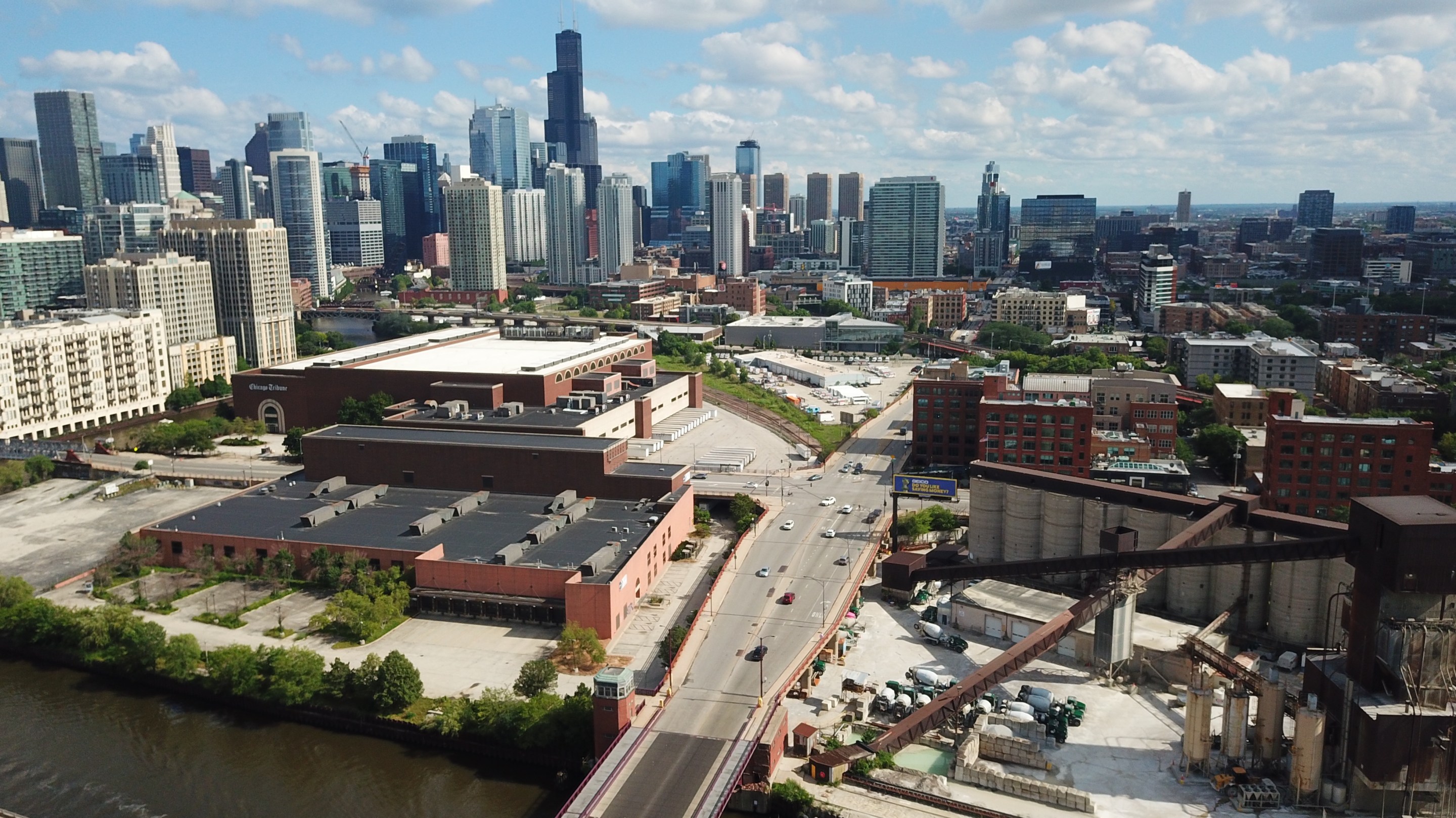
The Regional Transportation Authority is flexing its, ahem, authority, and asking that the City of Chicago put bus lanes in the reconstruction of a key intersection as part of the new Bally's Casino development. The RTA, the state agency that oversees the CTA, Metra, and Pace, sent a letter to the Chicago Department of Transportation last week asking the City to collaborate on the redesign of the Chicago Avenue / Halsted Street intersection and viaduct. The letter also noted that the RTA could theoretically intervene in order to carry out one of its prerogatives: building bus lanes on any road in its Chicagoland service area.
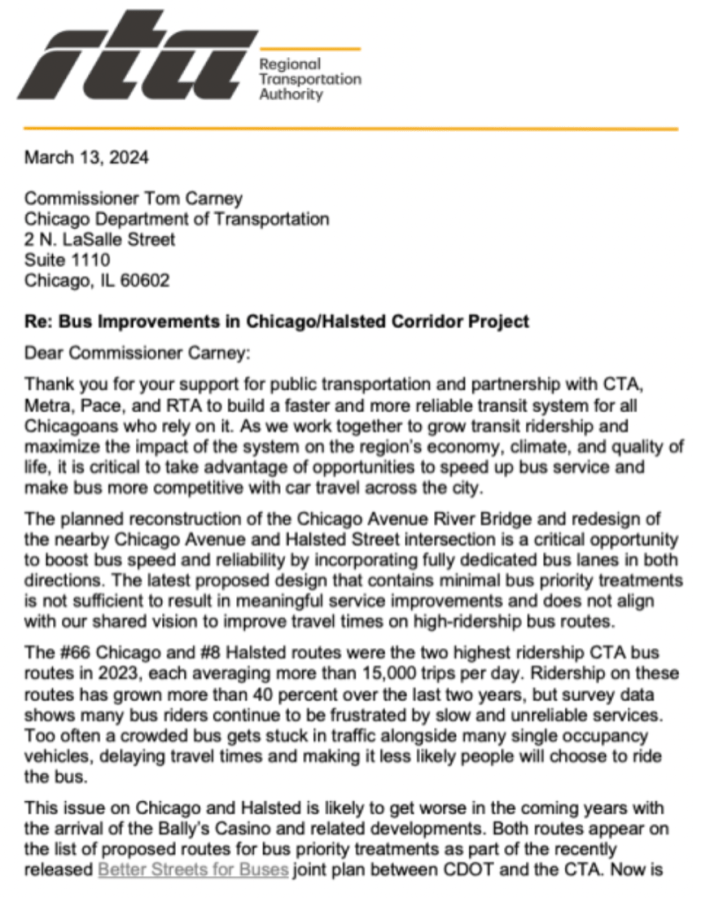
Let's rewind a bit, though. CDOT hosted a public meeting on the project – promoted by the nonprofit neighborhood association North Branch Works and not through department's own channels – on January 23. At the meeting CDOT discussed its proposal to replace the Chicago Avenue bridge over the Chicago River, and rebuild the viaduct that carries the streets over railroad tracks and the river, and past the future casino.
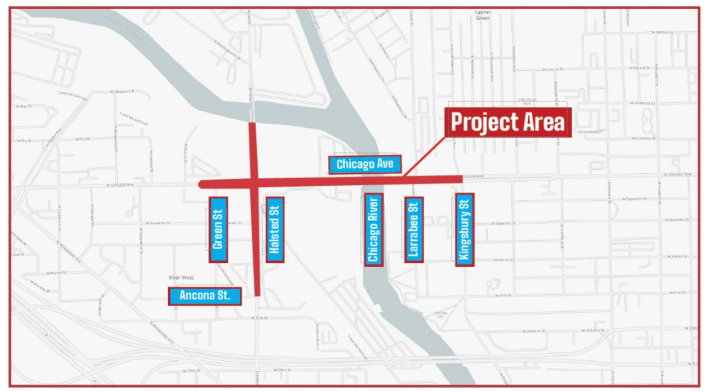
The Active Transportation Alliance and other walk/bike/transit advocates criticized the plan as a half-measure. They noted that it included few accommodations for the many bus and bike riders who use these streets, and little proposed to reduce the number of traffic crashes.
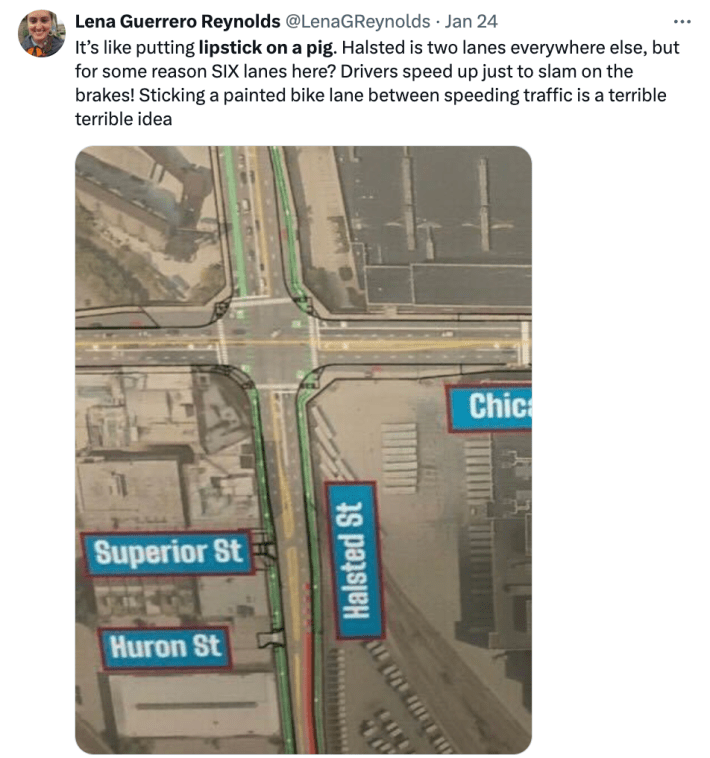
AT the RTA board meeting on February 15, Austin Busch, on behalf of Safe Streets Union, and Carsten Lohan argued that the RTA has the power to dictate street design at Chicago/Halsted. "It is clear that buses are an afterthought in this design," Busch said at the hearing. "Buses are given queue jumps only in the westbound Chicago Avenue direction, and the northbound Halsted Street section."
Queue jumps, used on the downtown Loop Link express bus corridor, give buses a head start over other traffic via special stoplight signals. But this only works when the bus is at the front of other motor vehicles in a lane. If a bus is behind other vehicles, the queue jump signal has no effect.
Busch noted that the CTA's 66 Chicago and 8 Halsted routes are among the transit system's ten highest-ridership bus lines. Separately, the Active Transportation Alliance's bus route report cards from 2018 assigned the letter "D" to 8 Halsted and an "F" to 66 Chicago, based on average speeds and incidence of bus bunching. It's possible that the 66 has gone up a letter as CDOT has added part-time and full-time bus lanes in various segments since 2018.
Busch discussed how the proposed Chicago/Halsted design appears contrary to City law requiring Complete Streets design; CDOT and CTA's joint Better Streets for Buses plan; and the stated policies of the Illinois Department of Transportation, which is co-funding the project's design phase. He added that RTA's own Transit is the Answer Plan supports the agency getting involved with projects where transit is being sidelined.
"Bridges don't get built very often in the Chicago area, as evidenced by the century-old bridge this project replaces," Busch concluded. "We cannot wait for longer-term priorities [such as the Better Streets for Buses Plan, which has yet to announce corridor upgrades] to take advantage of current construction on this project, a $65 million endeavor that leaves bus riders further stuck in traffic. With construction to begin in the third quarter of 2024, it is imperative that the RTA inserts itself as an advocate for transit riders in the current 'Final Engineering' phase of the project, and utilizes its state-granted powers to improve the experience of over 4 million annual bus rides."
CDOT is widening the Chicago bridge, adding lanes of traffic.
— Lincoln Ave Bike Lane (@lincolnavebike) January 24, 2024
The 66 bus has the second highest ridership in Chicago. At times it represents 50% of people moving through here.
It’s getting crumbs from @ChicagoDOT pic.twitter.com/7ScFIRBI7d
Lohan noted that other cities are leaving Chicago in the dust when it comes to providing faster, more reliable bus service. "Chicago has less than 15 miles of bus lanes, clearly lagging behind national peers in terms of dedicated roadway space for buses." This is embarrassing compared to New York City (150 miles of bus lanes), Los Angeles (50 miles), and even Indianapolis (13 miles of bus rapid transit lanes). "The logical solution would be to stitch these three separate segments of bus lanes [on Chicago Avenue] together, creating a 3.2 mile dedicated lane for the Chicago Avenue bus."
In response to Busch's comments, RTA board chair Kirk Dillard said, "I will clearly talk to CDOT." Dillard also suggested that Busch share argument for better transit accommodation at Chicago/Halsted with the CTA board and local news outlets.
Board director Pat Carey asked Dillard to gather more information on the situation. She particularly wanted to know if and how the CTA was involved in the Chicago/Halsted project's design, to which RTA Executive Director Leanne Redden responded that the agency would report back to her on that.
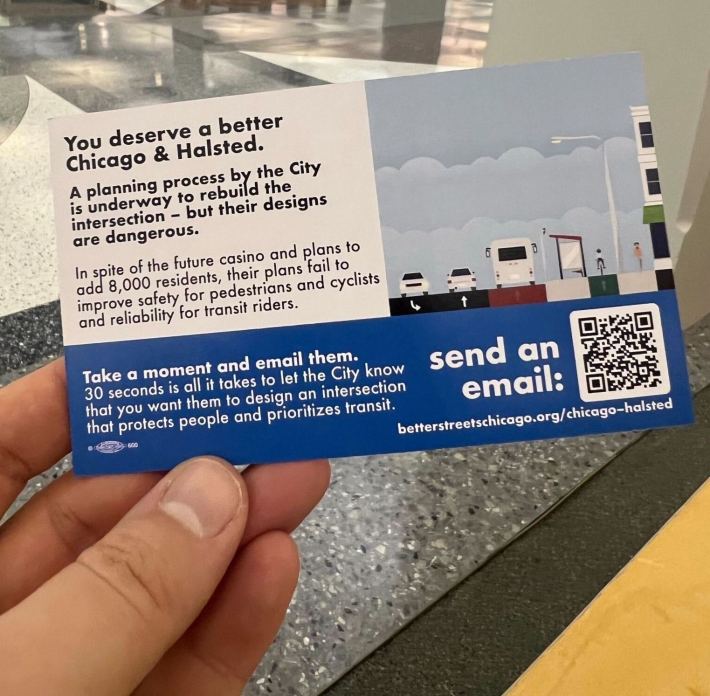
Dillard and Redden did, in fact, talk to CDOT. Last week they sent the letter to de-facto CDOT Commissioner Tom Carney. (Mayor Brandon Johnson appointed him back in December, but Carney will likely finally be approved by alderpersons during Wednesday's City Council meeting.) The correspondence, outlines RTA's authority to intervene to build bus lanes, and reiterated many of the points made by Busch and Lohan. For example:
The latest proposed design that contains minimal bus priority treatments is not sufficient to result in meaningful service improvements and does not align with our shared vision to improve travel times on high-ridership bus routes.
The letter also summarized the CTA's own feedback on CDOT's proposed street layouts:
The most recent plans include only minimal bus priority treatments, with a short segment of a shared bus/right turn lane on westbound Chicago approaching Halsted and a short segment of bus lane on northbound Halsted south of Chicago that requires the bus to merge with general traffic before reaching the intersection with Chicago Ave. CTA has stressed that they do not concur with this design.
CDOT spokesperson Erica Schroeder confirmed that Carney received the letter. "Following the public meeting in January, CDOT is reviewing all feedback received and assessing opportunities to integrate additional design elements that enhance safety for all road users and help improve bus/transit operations," she said.
CDOT expects to finalize design near future and begin construction this fall.

Did you appreciate this post? Please consider making a tax-deductible donation to help Streetsblog Chicago keep publishing through 2025. Thank you.
